
Project Facts
Project name: Padival House
Architecture firm: Anahata
Principal architects: Mithila Manolkar, Puneeth Hegde
Project location: Belagavi, Karnataka 590006, India
Completion year: 2017
Gross built area (square foot): 2290 sq ft
Site dimensions: 40ft X 60ft
Photo credits: Shamanth Patil J
Photographer’s website: www.raysandgreys.com
Structural consultant: Vinay Behre Associates, Belgaum
Fabrication: Bharat industries, Belgaum, SAM engineers and fabricators, Belgaum
Carpentry: Dharmendra Jangid, Belgaum
Painting: Ravindra Chauhan, Belgaum
Tiling: Tejpal Deegwal, Belgaum
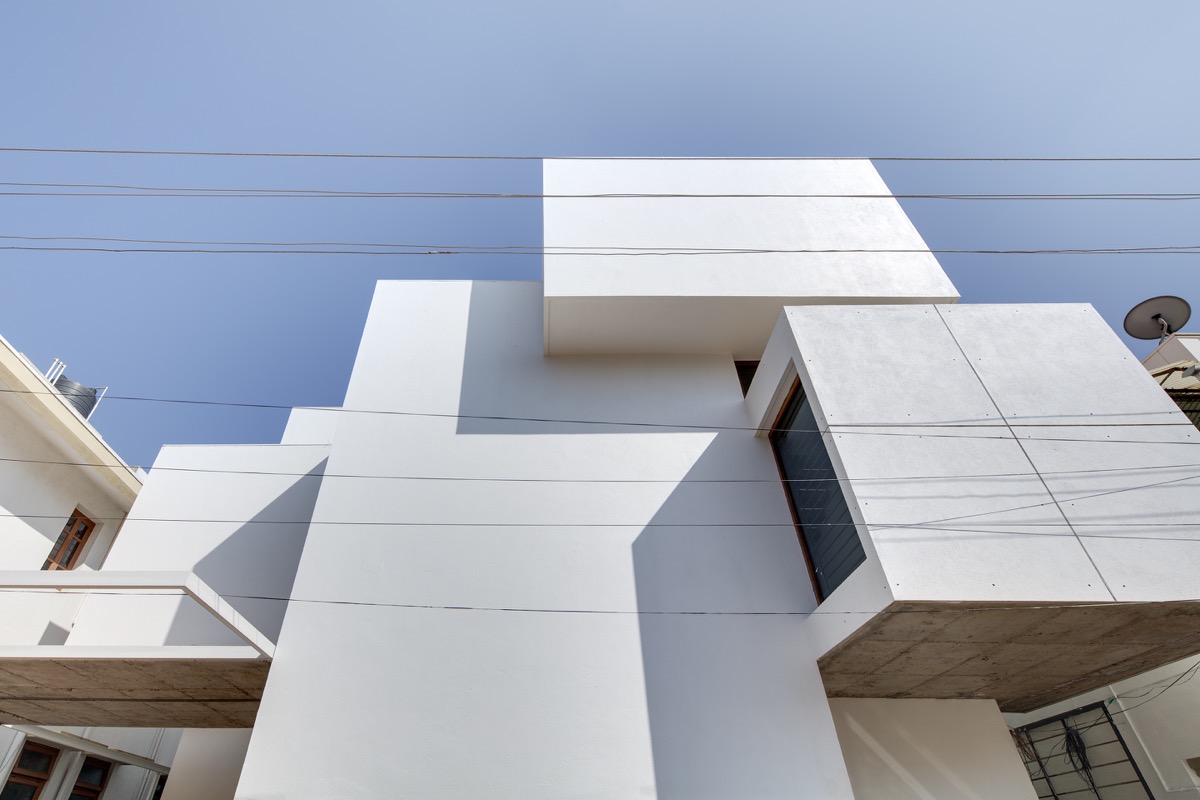
A young couple and their 2 children, originally from Mangalore, a coastal city of south India, approached us to design their home. The brief was to build a clean modern contemporary house. Padival house is a private dwelling located in the south of Belgaum in a gridiron neighborhood with the streets running north-south. The site is rectangular, west facing with an 80 feet major road.
In Mangalore, the courtyard was an integral part of a traditional house. We chose to vividly reflect the memories of a courtyard, readapting the vernacular typology to a house in an urban context. The program is organized into spatial compartments around the courtyard based on the function they are designed to serve. Each of these compartments further evolves into primordial geometric masses. The idea was to create a more pure form of architecture – of architecture stripped of its non-essentials, reduced only to its basic elements and the feelings that the space itself evokes.
Hortus conclusus
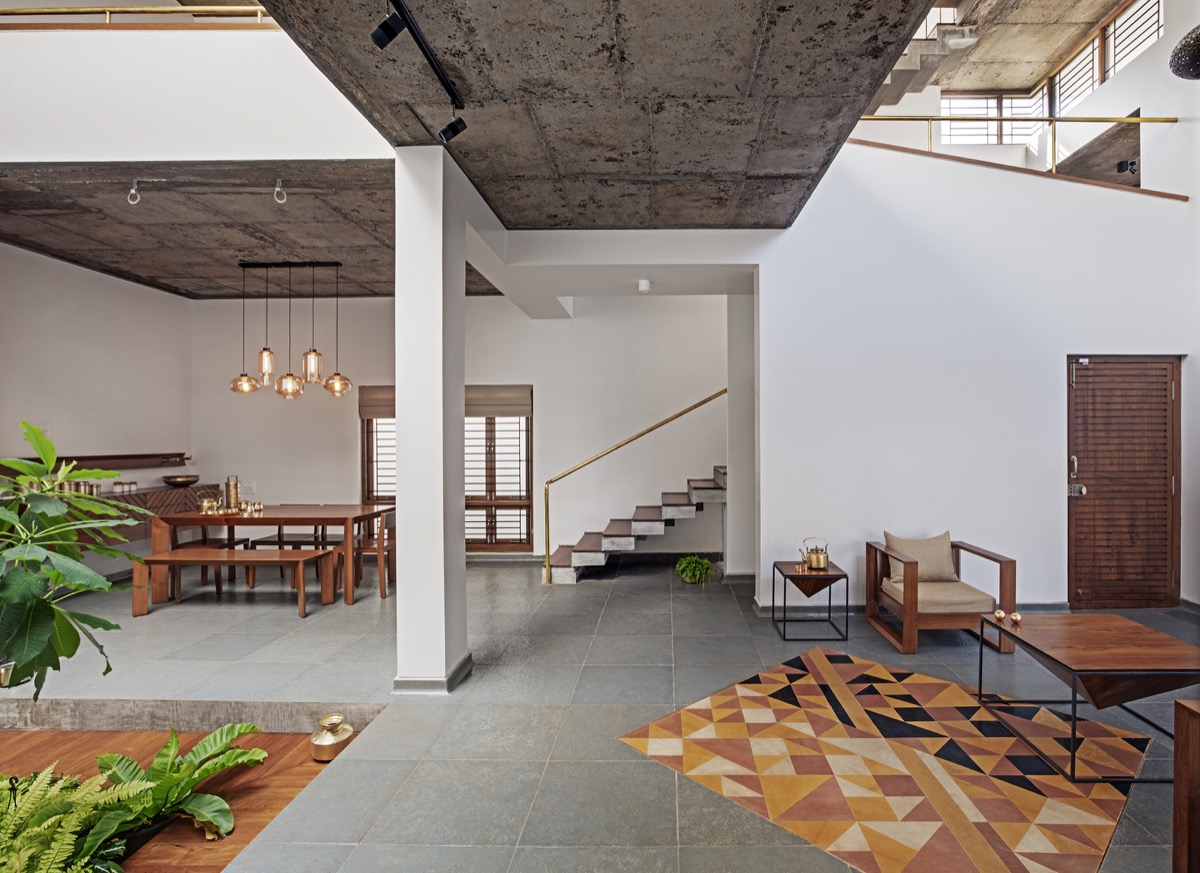
“Inside and outside, earth and heaven converge in the enclosed garden. The building is, so to speak, erected out of the mass of the earth, with the garden a cavity in that mass. The boundless space of the sky penetrates the garden and absorbs it. “
Aben, R., & De Wit, S. (1999). The Enclosed Garden, 10-11. Rotterdam: 010
The entrance lobby leads to the courtyard on one side and the living space on the other. The living space, a floor height of one-and–a-half storey, diminishes to single story height as it flows into the courtyard, and thus resulting in a Library space on the first floor which looks into the courtyard on one side and the living space on the other. The transition from the living to other private functions of the house is through the well-lit dining area. The river finish tandoor flooring seamlessly connects the living and dining spaces to the courtyard.
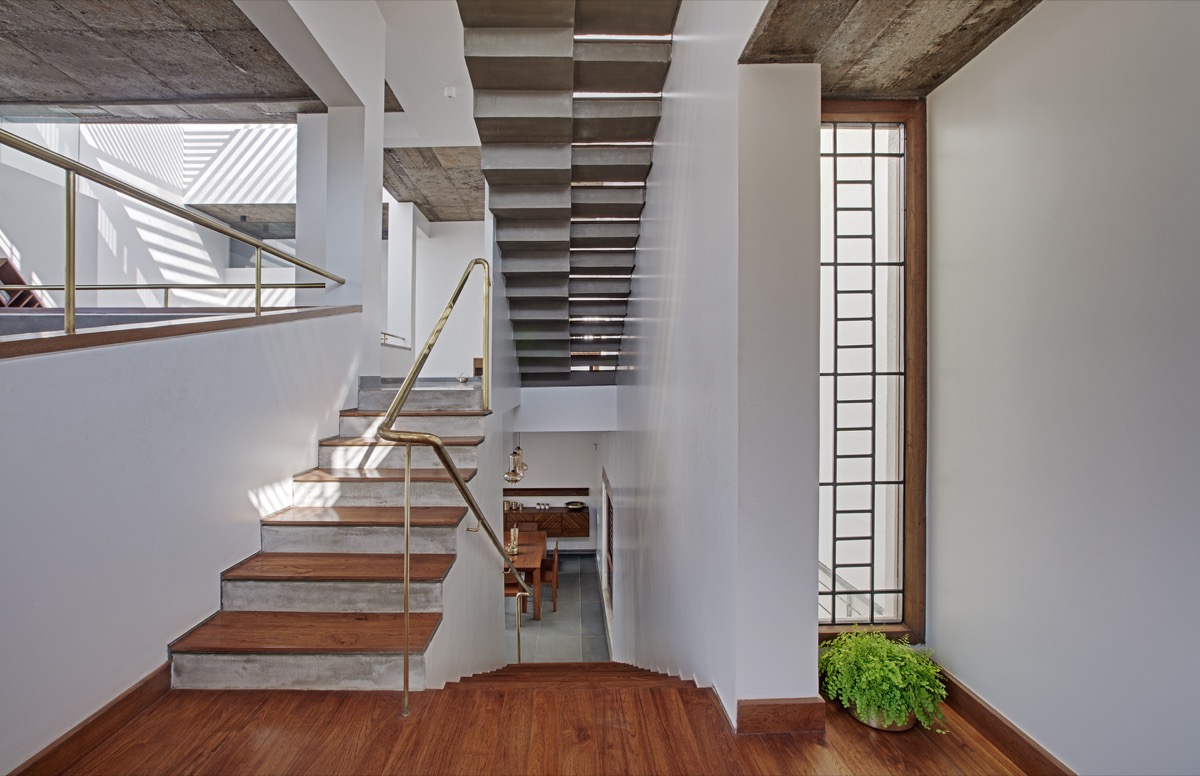

The Altar is a space floating in the air. Externally, the mass deliberately disconnects from the living room wall, giving an impression of a floating cube sliding out from within. The reduced floor height and the clerestory window invoke a mystical feeling. Stairs from the Altar lead to the Library and the family spaces. The one-and-a-half storey height of the living room leaves a clerestory window in the library exhibiting a dialogue between the courtyard and the terrace of the living room. The walls of the private spaces around the courtyard are kept low with glass continuing to touch the ceiling. The courtyard thus flows into the bedrooms, blurring the boundaries of the courtyard while establishing a connection with the internal spaces of the house. The spatial strategy is designed to visually connect spaces to allow a sense of communication. The concrete ceiling is left exposed to add a sense of informality in contrast to the smooth white plastered walls.
Making of the House

A flight of sunbathed stairs from the family room lead to the ‘Barsati’ which transitions into the living room terrace through a semi open verandah. The ‘Barsati’ also acts as a pantry to serve for the terrace parties that the client usually hosts.
“The Sun does not realize how wonderful it is until after a room is made.” – Louis Kahn
Light percolates into the building through strategically placed fenestration, in some places touching the roof, allowing an unobstructed flow of view to the outside. Two major light wells, the courtyard and the skylight above the stairs in the family space display a subtle, perpetual play of light and shadow creating a high sense of order and visual impression. Light as a building material is sculpted carefully to define spaces and their functionalities. As the sunlight changes throughout the day, the shadows make the space dynamic and ever-changing across all seasons. The perception of space varies depending on where one is standing in relation to the light wells.
Drawings
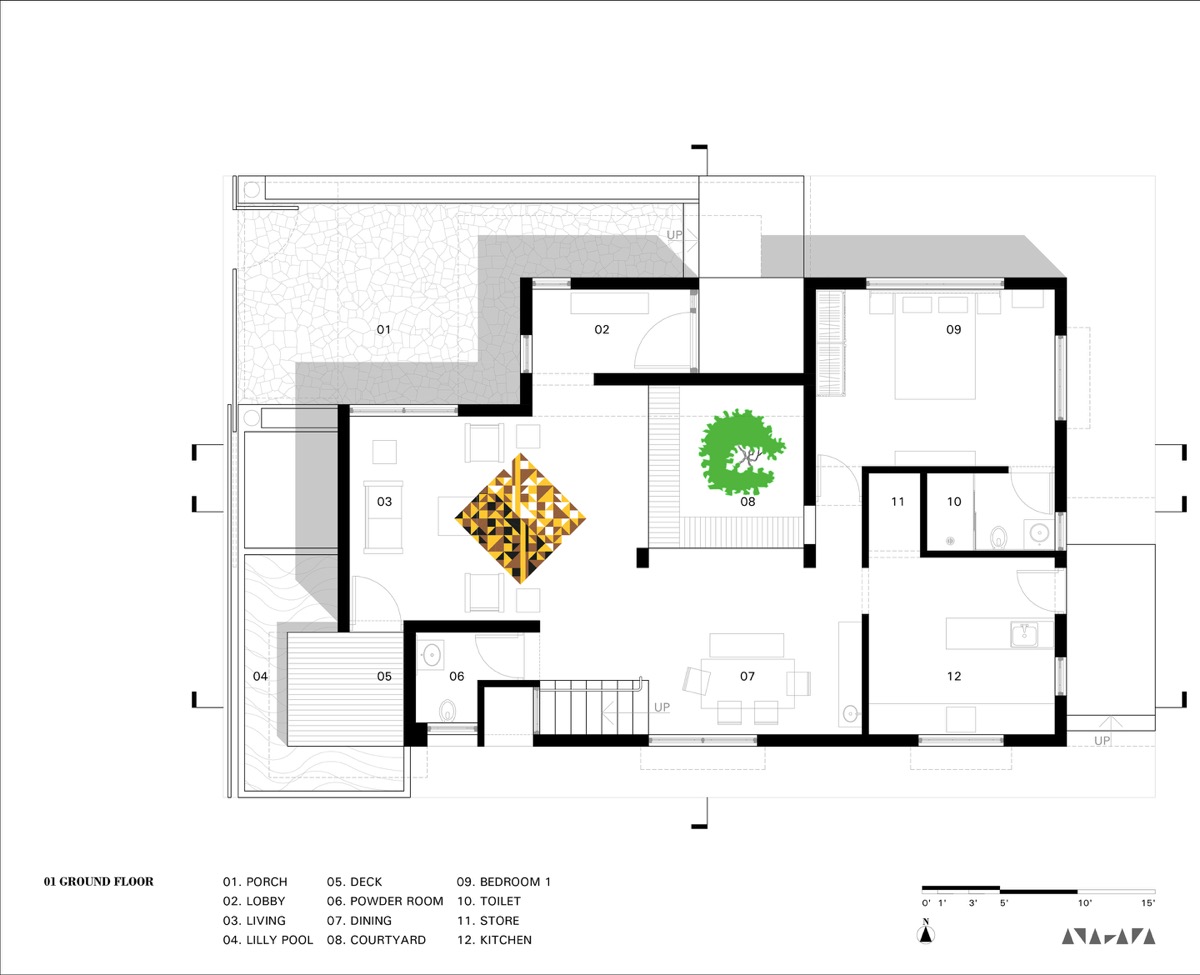
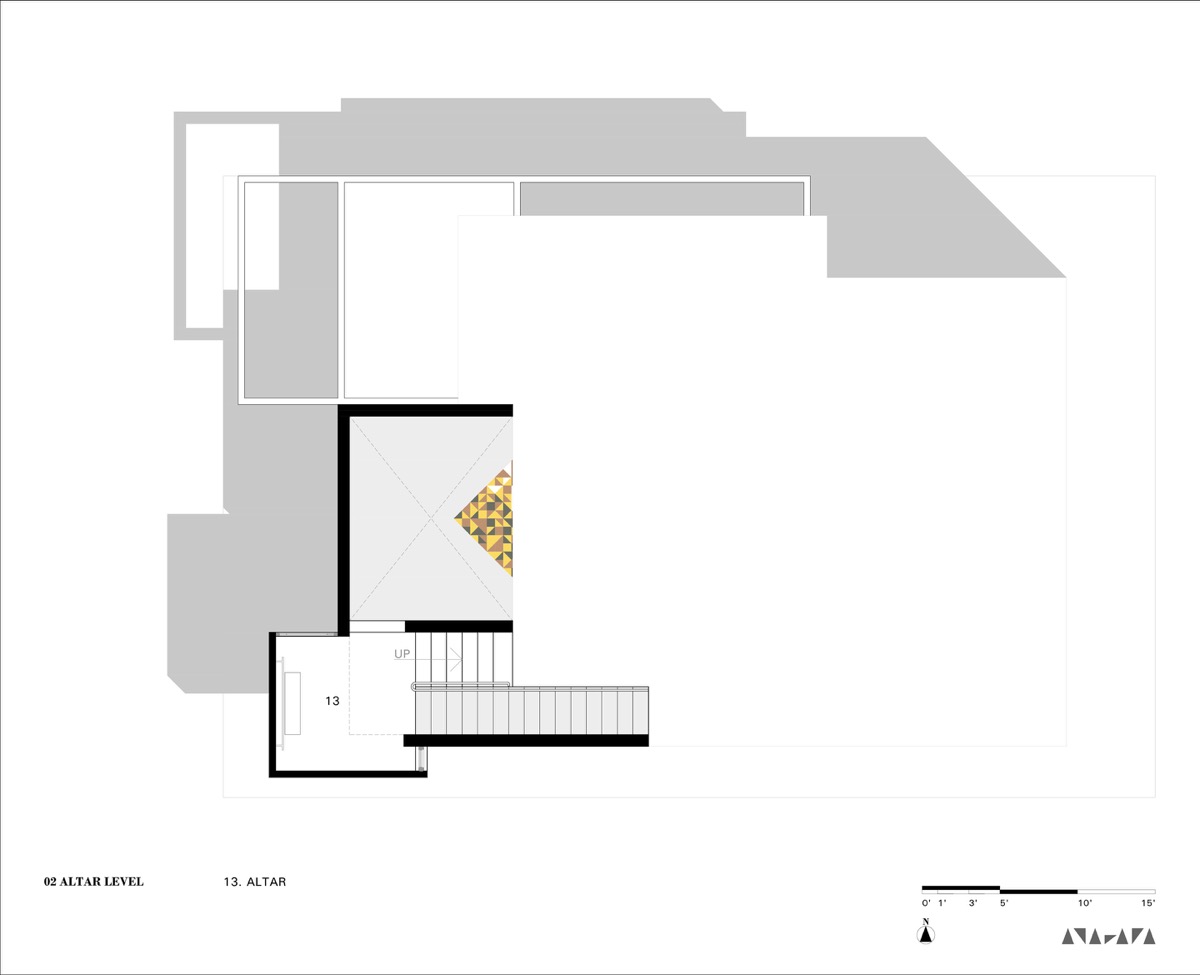



Inspiration from the artist

The interiors and furniture designs are heavily inspired by contemporary Indian artist SH Raza. His approach to color, line, space and light, the geometries in his paintings, all reveal a deeper understanding of emotions. Concrete, white plaster, brass, wood and natural stone became the color palette for the interiors. An abstraction of the painting ‘Tanava’ on the floor using colored stone, adorns the living room. It rises into the third dimension with the floating pyramid stools and coffee table set in harmony. The shadows formed by the courtyard skylight empirically reinterpret the patterns of Raza paintings. The triangular book shelf in the Library, indulges in an amicable conversation with the light each time the sun renders the wall behind. The painting, ‘White crosses’ is sculpted in wood to form the wardrobes adding warmth to the bedroom interiors.
The house is an abstract composition of masses responding to the west sun. The sharp shadows move as the day progresses giving life to the facade. The compound wall is designed to resemble a fabric, very light and absent keeping the composition undisturbed. The house attempts to stand as a piece of art.


























One Response
Excellent Design from young architect engineers